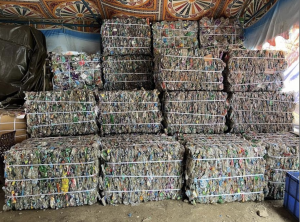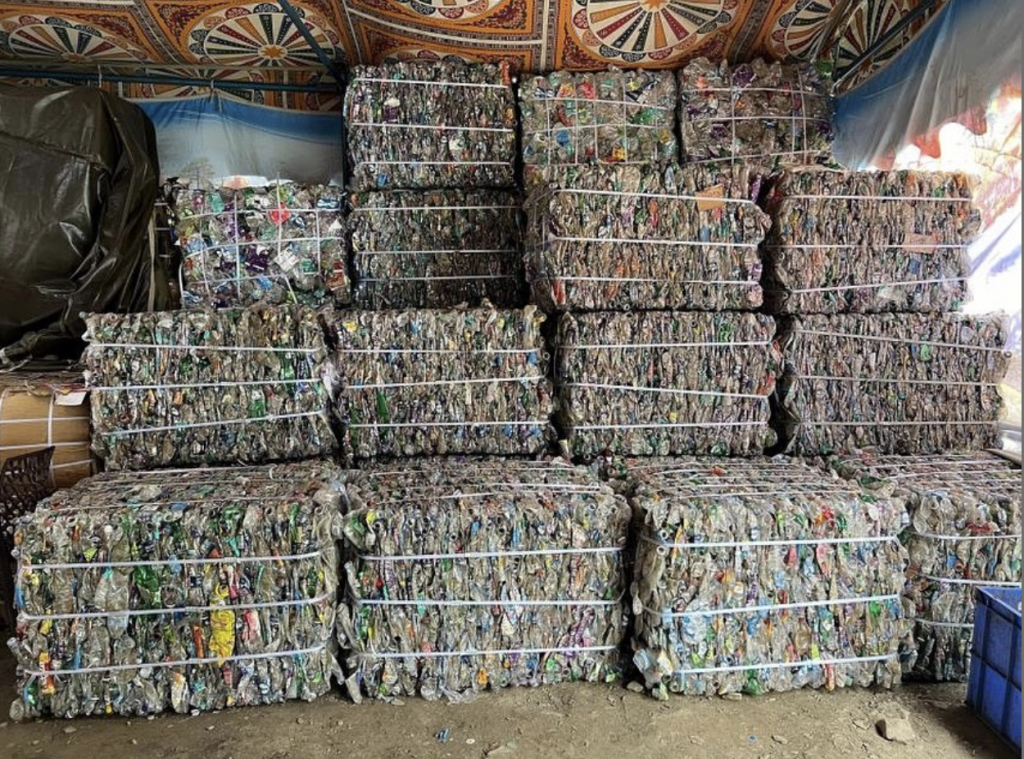SRINAGAR: In a concerted effort to ensure a sustainable Shri Amarnath Ji Yatra– 2024, the government has adopted comprehensive measures aimed at achieving zero landfill and zero waste while maintaining cleanliness throughout the pilgrimage.
The Directorate of Rural Sanitation under Department of Rural Development and Panchayati Raj, Jammu and Kashmir has launched various initiatives to make the annual Yatra a zero-landfill pilgrimage.
The initial 20 days of the yatra have seen a significant amount of waste generated by devotees and service providers. The cumulative figure of waste on both axes remains 200 tonnes. Total quantity of waste processed in tonnes is 162.40, and total inert waste generated in tonnes is 34.30.
Out of total 200 tonnes of waste, the wet waste collection is 85.15 tonnes in which 85.02 tonnes of wet waste was processed and a little quantity of wet waste 0.07 tonnes was sent to EFL.
The dry waste collection is 80.31 tonnes, out of which 77.38 tonnes was processed and only 3 tonnes of waste is yet to be processed.
Similarly, out of 34.30 tonnes of inert, 25 tonnes are sent to Srinagar Municipal Corporation (SMC).
These figures highlighted the effectiveness of the waste management strategy, which emphasizes the separate collection and processing of wet and dry waste to minimize environmental impact.
The waste management strategy involves the careful segregation and processing of wet and dry waste, and it also includes the use of eco-friendly bags, a ban on plastic, mass awareness programs, proper disposal of waste, Water ATMs, Mascots for awareness and other measures transforming the yatra into an environmentally conscious pilgrimage.
Secretary Rural Development and Panchayati Raj, J&K Dr Shahid Iqbal Choudhary and Director Rural Sanitation, Anoo Malhotra have been regularly reviewing the sanitation facilities and progress.
Several initiatives with services providers have been taken to ensure a clean and waste-free yatra. Eco-friendly bags were being provided in place of plastic and polythene bags. Water ATMs have been installed at Yatra basecamps and enroute to holy cave to reduce the PET bottles consumption.
15 Waste processing facilities had been established on both Baltal and Pahalgam axis to deal with huge quantities of wet and dry waste collected from different camp locations and enroute.
More than 7000 sanitation workers are working in 3- shifts to clean the basecamps, roads, routes, and other resting places.
Eight processing facilities have been set up at the Baltal axis starting from Neelgrath to Amarnath cave shrine and seven processing facilities set up at Pahalgam axis starting from Nunwan till Panchtarni.
Similarly, the wet waste is processed using the conventional composting methods and the dry waste is processed through segregating into different types of recyclable and non-recyclable waste and further processing it using the baling machines.
Eight vehicles – five at the Baltal axis and three at the Pahalgam axis – had been deployed for collection and transportation of waste at the base camp locations.
Apart from 7000 sanitation workers, more than 600 trained workers and 25 management and supervisory staff have been deployed on both axes combined to handle day-to-day waste collection from primary and secondary sources, its transportation, and processing and scientific disposal.
Apart from men and machinery, robust Information, Education and Communication (IEC) strategies have been put in place to maintain the yatra sites and ensure complete waste collection.
Director General Rural Sanitation, J&K, Anoo Malhotra said that the concerted efforts of waste management teams yielded impressive results in managing plastic, wet, and inert waste along the routes. “The waste generated on Baltal axis and Pahalgam axis had been processed after segregating into various recyclable and non-recyclable streams like PET, HDPE, LDPE, cardboard, multilayered plastic, and metals,” she added.
The collaborative efforts of the service providers, volunteers, and Yatris have been instrumental in maintaining the sanctity and cleanliness of the yatra routes.
Furthermore, about 2245 toilet units and 235 bathing points had been installed and maintained along the Pahalgam axis while 1660 toilet points and 490 bathing units had been installed along the Baltal route to improve sanitation.
Additionally, 250 toilet units have been installed along the Srinagar-Jammu National Highway for the convenience of the travelers.
Moreover, initiatives like the procurement and distribution of cloth bags to Yatris for plastic waste collection, and provision of water ATMs for free potable water have been taken.
The implementation of these measures has also included a robust system for addressing complaints and gathering feedback. Over the past 20 days, only 9 complaints were received, all of which have been resolved swiftly. Additionally, 1061 feedback responses from pilgrims have been recorded, providing valuable insights for further improving the yatra experience.


